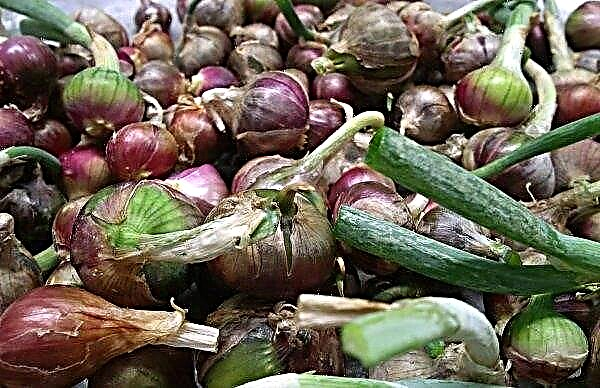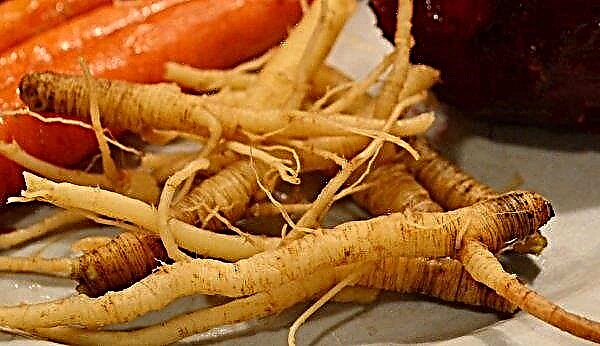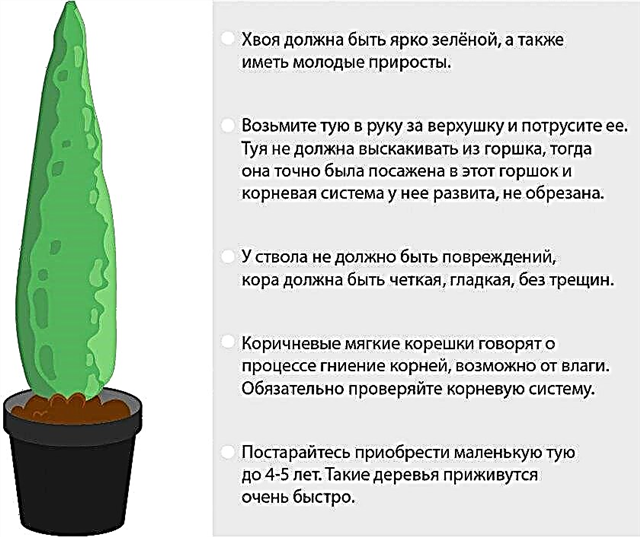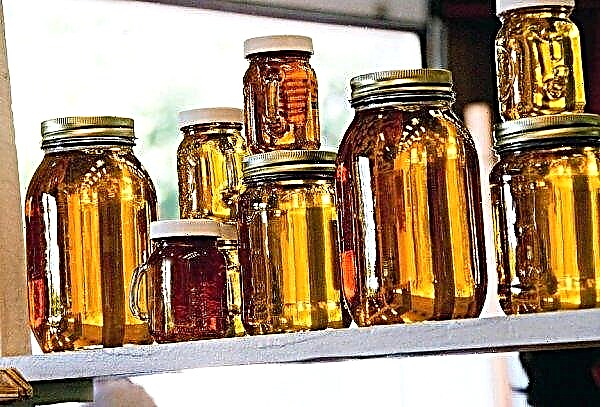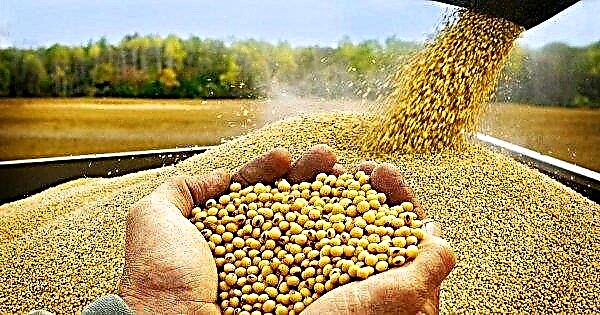In the breeding of rabbits, the master's ability to organize the care of sucral rabbits plays an important role. The females of these animals are extremely prolific. This is due to the ability of the egg to go to the stage of ovulation not on certain days of the cycle, but at the time of mating. This feature allows you to calculate pregnancy schedules, so that okrol falls out during the warm season, and quickly adjust the nutrition of a pregnant female.
Signs of pregnancy
There are 4 methods for determining pregnancy in a rabbit:
- visual;
- by weight;
- by palpation;
- Ultrasound
First of all, behavioral reactions change in the sucral female. She becomes quiet, tries to behave carefully, detaches herself from the male. Aggressively reacts to the owner. The main sign of pregnancy is the laying of a nest. The animal circles for a long time in a cage with hay in its teeth in search of a suitable place, plucks the fluff from its chest and abdomen.
Important! Some females build a nest immediately after birth.
In addition to their behavior, females change their diet. They try to drink more water, they can refuse the usual food, throwing it out of the feeder. This is a signal to the owner that they need other food.
Weigh the female before mating. During pregnancy, she will gain weight. Record the obtained indicators on a separate sheet. After 2 weeks after mating, a palpation procedure is performed. It is done by an experienced technician or veterinarian. In the early stages, the procedure is dangerous for the animal and future offspring, therefore it is not performed if less than 10 days have passed since the mating. The animal is fixed, holding the ears and scruff. A free hand is placed between the legs of the female in the pelvic area and carefully probes both sides. Embryos at this stage of development resemble grapes by touch. The lower abdomen of the sucral female is denser, the uterine horns are enlarged.
The animal is fixed, holding the ears and scruff. A free hand is placed between the legs of the female in the pelvic area and carefully probes both sides. Embryos at this stage of development resemble grapes by touch. The lower abdomen of the sucral female is denser, the uterine horns are enlarged.
Did you know? A rabbit can die of fear if it is very scared.
The most accurate technique to determine succession from the 6th day of conception is an ultrasound examination. The procedure is carried out in a specialized clinic.

How long
The duration of pregnancy in rabbits is 28–35 days. A more accurate determination of how many days the succession will last will help knowledge of the characteristics of the breed. In larger animals, gestation takes less time.
The terms of pregnancy and the date of possible okrolya in rabbits can be calculated by type:
- giants - 27–28 days;
- California - 30–31 days;
- decorative - 30–32 days.
How to determine the term
It is almost impossible to determine how long a pregnancy is going without knowing the date of mating. If you do not have these data, it is better to start preparing in advance or conduct an ultrasound. Inspect the female periodically. Offspring show signs of life in the womb on the 25th day of pregnancy. 2–4 days before the birthing, the rabbit actively collects fluff in the cage, rips it off on his chest and equips the nest. These are the precursors of childbirth, which the owner should regard as an incentive to active preparation.
2–4 days before the birthing, the rabbit actively collects fluff in the cage, rips it off on his chest and equips the nest. These are the precursors of childbirth, which the owner should regard as an incentive to active preparation.
Important! In no case do not touch the nest during the last cleaning before the round. You can put soft hay or fluff into the cage, which the female uses herself to arrange.
Features of the course of pregnancy
If all the rules of care are observed and the female receives a sufficient amount of balanced food, pregnancy proceeds without complications. During gestation, females become shy, so it is better not to touch them once again. Stress, combined with malnutrition, can cause toxicosis or cause miscarriage.
Toxicosis
The presence of a predisposition to a pathological condition in a female during gestation depends on several factors:
- breed features;
- number of births;
- obesity;
- nutrition features;
- the age of the individual.
 Toxicosis can occur in a pronounced form or with a blurred clinical picture and accompany the female at the beginning, middle, end of gestation and even persist after okrol.
Toxicosis can occur in a pronounced form or with a blurred clinical picture and accompany the female at the beginning, middle, end of gestation and even persist after okrol.The main symptoms of toxicosis:
- shortness of breath - the female breathes heavily, hardly rises;
- decreased appetite;
- problems with coordination of movements;
- cramps
- vomiting
- digestive upset;
- pungent smell of acetone.
Important! If these symptoms occur, contact your veterinarian immediately. Toxicosis is especially dangerous at the last stage of gestation and after childbirth.
Number of rabbits
On average, the female leads from 5 to 12 babies.It all depends on the number of genera and breed features:
- giants - 5–7 babies;
- California rabbits - 8–10;
- decorative views - 7–9.

Proper care of the rabbit
Sexual maturity in rabbits of medium and small breeds occurs in 4–5 months, in large - in 6–9 months. Before mating, the male and the female are checked for the presence of sexually transmitted infections, and they take feces, urine and blood tests. 2 months before the planned mating, deworming is carried out and it is checked that all scheduled vaccinations are done on time.
The female is planted in the cage to the male, and after mating they are kept separately. In the cage set a house for the nest. It is a wooden box with an opening for entry into which the female can freely climb. Try not to make harsh sounds near the cage or pick up the animal in your arms without urgent need.
Feeding
When the first behavioral signs of pregnancy appear, change the diet. The amount of food should be increased so that the mother's body and the entire offspring are enough for the nutrients. Take care of easy access to clean water. It is best to organize a drip system. This will avoid the transfusion of water in the cage and allow the animal to independently regulate fluid intake. At the beginning of pregnancy, the diet is enriched with protein-containing herbs and crops. The amount of feed is increased by 230 g. For 7–10 days prior to the incineration, silage, fiber, greens are excluded, replacing them with compound feeds enriched with minerals.
At the beginning of pregnancy, the diet is enriched with protein-containing herbs and crops. The amount of feed is increased by 230 g. For 7–10 days prior to the incineration, silage, fiber, greens are excluded, replacing them with compound feeds enriched with minerals.
To maintain the normal functioning of the body of the female and offspring in the womb, it is necessary to enrich the diet:
- salt - 2-3 g;
- chalk - 10 g;
- fish oil - 2.5 ml.
An approximate diet of a pregnant rabbit in a percentage ratio:
| Vitamin supplements | 20% |
| Meadow grass | 10% |
| Hay | 30% |
| Grain mix | 40% |
Important! Do not overfeed the female bearing the offspring - this is fraught with obesity. Accumulation of fat over the uterine cavity complicates the process of childbirth and can lead to the death of offspring.
Content
A cage for a pregnant female is best organized separately from other animals. The optimal length of the cage is 1 m. A mandatory measure is the disinfection and cleaning of the cage. Provide a female walking area. A week before the rounding, carry out the last cleaning of the cage, add dry hay and do not let the animal out of the cage anymore. When installing a house for the nest, sprinkle 5–7 cm of sawdust on its bottom. The female will do the rest herself. The house should not be too big, otherwise the rabbit will use it as a toilet.
Okrol
Usually it takes place at night or in the early morning. Pay attention to the behavior of the female. She needs to equip the nest. If this does not happen, put on sterile gloves, collect fluff and arrange it yourself. Females who do not build a nest before childbirth have a poorly developed maternal instinct, so they should be monitored more carefully.
When to expect
A week before giving birth, the rabbit begins to behave aggressively, hiding in the dark corner of the cage. The uterus during this period is so enlarged that it interferes with the normal movement of the animal. The female walks overwhelmed, tries to move less.
The main signs of an early round:
- increased thirst;
- increased appetite;
- aggression towards a person;
- active arrangement of the nest;
- sagging abdomen.
Did you know? It takes the female rabbits only 5 minutes a day to feed. Unlike cats, she does not spend all her time with her offspring, she tries to feed at night when no one sees, and during the day she is away from the nest. This is due to the instinct of maintaining the genus. In the wild, the hare so in a way distracting predators from the nest.
How is the birth
Install a container of clean water near the house so that the animal has free access to it. Add more hay to the cage. Find a veterinarian ahead of time to call for complications. Standard delivery takes place in 15-25 minutes. In rare cases - per hour. Host assistance is usually not required. As soon as attempts have begun, check the female every 10 minutes. If it cannot be born or other unforeseen circumstances arise, call a doctor. Immediately after birth, check the cage for a stillborn offspring and afterbirth. All this must be removed in order to prevent the spread of infection. Perform all manipulations with gloves, avoiding touching the babies, otherwise the female, smelling someone else's smell, will refuse them. Count the number of kids. If there are more of them than the nipples of the mother, it is better to put part of the offspring to another nursing female.
Immediately after birth, check the cage for a stillborn offspring and afterbirth. All this must be removed in order to prevent the spread of infection. Perform all manipulations with gloves, avoiding touching the babies, otherwise the female, smelling someone else's smell, will refuse them. Count the number of kids. If there are more of them than the nipples of the mother, it is better to put part of the offspring to another nursing female.
Rabbit and Cub Care
A full-fledged nutrition of a female after a bark will help her quickly restore her body and feed her babies. Milk begins to arrive immediately after the basting.
Recommended to find out

Food volumes increase gradually.
For a rabbit with a weight of 5 kg, an increase in volume occurs according to the scheme:
- the first 24 hours - 350 g;
- 2-20 days - 440 g;
- 21-30 days - 550 g;
- immediately before weaning - 700 g.
Babies are born naked and blind. After 8-10 days, they have a fluff and eyes open. In winter, take care of cell insulation. If the female is in the hunt, it is better to isolate her from the babies for 8-12 hours and re-mate. Such behavioral reactions are characteristic of birthright. Rabbits do not need special care. After 21-25 days, they will independently begin to eat grass and hay with their mother and will gradually abandon milk.
As soon as the kids exit the nest, it needs to be removed and the cell disinfected. To ensure the normal development of the digestive tract, after the offspring leaves the nest, only shredded soft hay and steamed grain are put into the cage. In the summer, they necessarily give juicy fresh grass.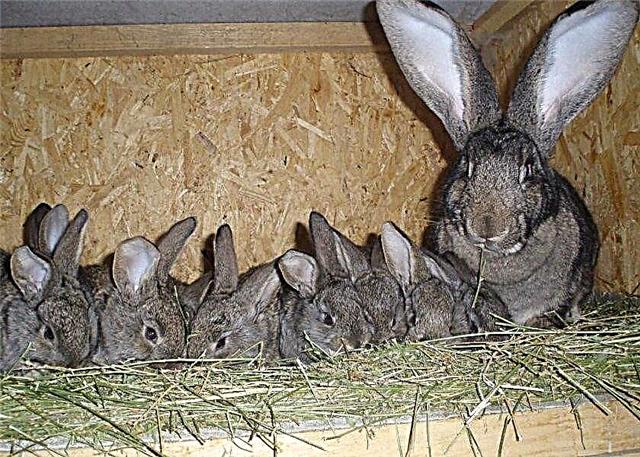 Equip new cages before planting rabbits from the mother. Set drinkers, feeders. The density of landing on a cage 1 m long is 3-4 rabbits. You can plant babies at the age of one month, but it is better to extend the suction period to 45 days.
Equip new cages before planting rabbits from the mother. Set drinkers, feeders. The density of landing on a cage 1 m long is 3-4 rabbits. You can plant babies at the age of one month, but it is better to extend the suction period to 45 days.
The first 1.5–2 months after the rabbits are deposited, they are especially prone to infectious intestinal diseases. Morning feeding should include dry food such as oats. Food is given 4–5 times a day. The night break between feedings should not exceed 10 hours. New feed should be added gradually to the diet. Try not to give too rough food for the first 2 months. Be sure to soak crops. Make sure that fresh dew does not leave dew, otherwise the rabbits will get sick.
Possible problems
After giving birth, the rabbit most often has the following problems:
- insufficient lactation;
- mastitis.
Find out also

If milk has not arrived in a day, an oxytocin injection should be given. This hormone promotes rapid contraction of the uterus and stimulates lactation. If the methods used to increase milk yield did not help, attach the rabbits to another lactating female.
Mastitis appears when an infection enters the milk duct through the nipples that are on the female’s stomach.
Main reasons:
- unsanitary maintenance;
- genetic abnormalities in the physiological structure of the nipples.
Check the female’s abdomen daily. If the nipples change color, palpation feels tightened papules and worsens overall health, consult your veterinarian. The problem is solved with a course of antibiotics and concomitant drugs.
As for eating offspring with rabbits, this is a myth. Rabbits are herbivorous representatives of the fauna and cannot eat the flesh of their own kind or other animals. The so-called eating of rabbits is an attempt by mother to protect her offspring. In rabbits, the teeth are too sharp, so the birthright, dragging the rabbits, can damage the thin skin on the baby’s abdomen. There are frequent cases when the rabbit during childbirth, trying to help the baby get out, tears off his ears. Inspect these babies and assess the degree of damage. Remove dead young growth immediately to avoid the spread of infection. Over time, the rabbit will gain experience and become more accurate in handling babies.
In rabbits, the teeth are too sharp, so the birthright, dragging the rabbits, can damage the thin skin on the baby’s abdomen. There are frequent cases when the rabbit during childbirth, trying to help the baby get out, tears off his ears. Inspect these babies and assess the degree of damage. Remove dead young growth immediately to avoid the spread of infection. Over time, the rabbit will gain experience and become more accurate in handling babies.
False pregnancy
Mating rabbits does not always end in fertilization of the egg. In false pregnancy, instead of ovulation, a rupture of the follicular membrane occurs, followed by a replacement with the corpus luteum. During the 18–20 days after sexual intercourse, the female displays all the behavioral reactions characteristic of a sucral individual. After this time, her behavior returns to normal and the female again admits the male.
Did you know? In a female rabbit, the uterus is bifurcated, which allows her to bear babies immediately from 2 males conceived at different times.
The main causes of false succession are:
- lack of sperm activity;
- mating with a castrated male;
- frequent childbirth;
- female age exceeding 3 years;
- hormonal imbalance in the female body;
- violent molting at the female at the time of mating;
- genetic abnormalities in the structure of the genital organs.
 Rabbits are highly productive animals. The physiological structure of their genitals allows to obtain offspring 6-7 times a year. The main task of the owner is to correctly draw up a schedule of pregnancies and mating in order to optimize the work of the economy and increase the number of individuals with high quality indicators.
Rabbits are highly productive animals. The physiological structure of their genitals allows to obtain offspring 6-7 times a year. The main task of the owner is to correctly draw up a schedule of pregnancies and mating in order to optimize the work of the economy and increase the number of individuals with high quality indicators.





